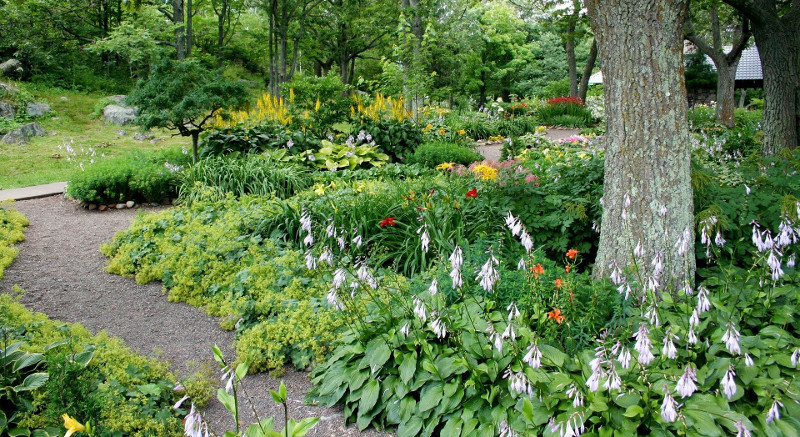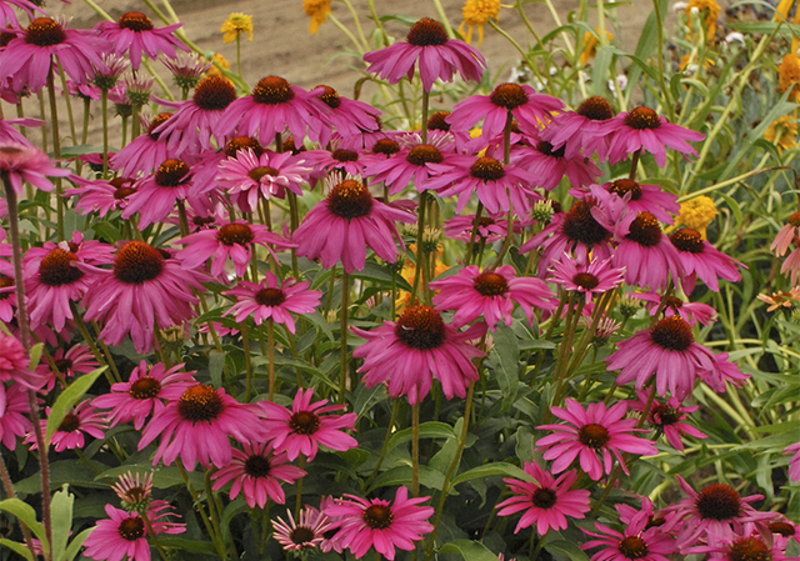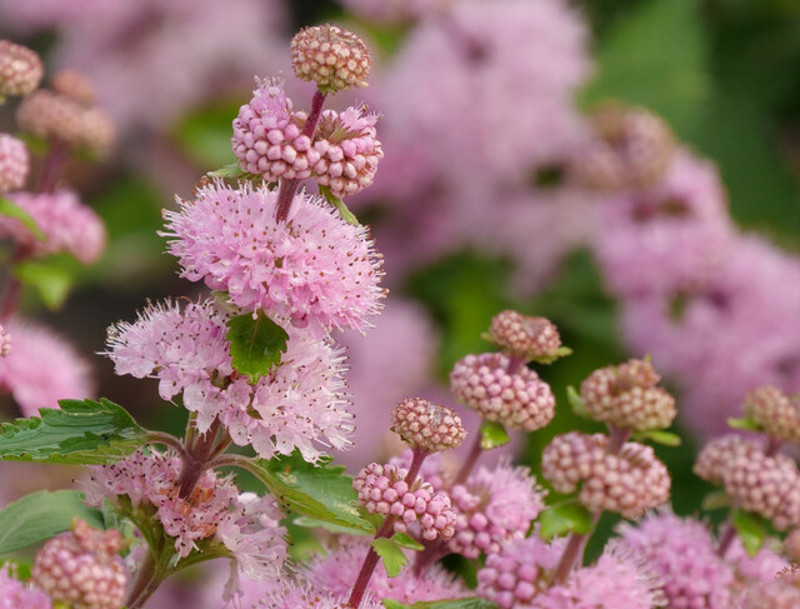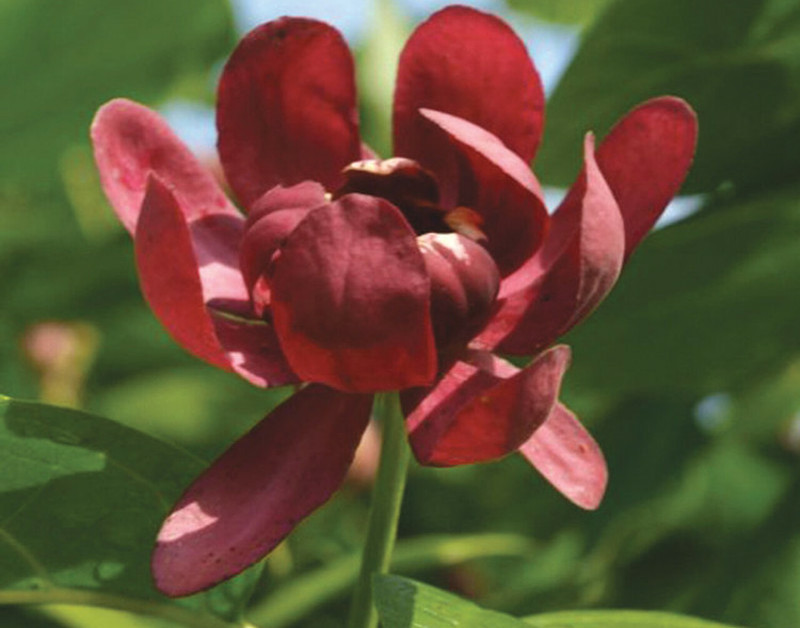Just because spring has sprung and your landscape areas have flourished, does not mean that your gardening tasks are complete. Whether you have already planted your garden or are just beginning to think about summer beds, there are many summer gardening tasks that can be done. Follow these guidelines to help maintain your summer garden all season long.

Watering Plants in the Summer
The general rule of thumb is to give you garden areas an inch of water per week. If you are getting regular rain then you should be fine. As the summer heat settles in, the soil will dry out more quickly and your plants will begin to wilt.
Best Time of Day to Water Plants in the Summer
For the health of your plants, the best time of day to water them is in the morning. Most of us have sprinkler systems or hoses, which water the entire plant. Morning irrigation allows the foliage on the plant to dry out during the day, which prevents fungal spores from forming. If you have to water in the evening, it is best to water at the base of the plant, to avoid getting the foliage wet.
Additional Watering
At the first sign of wilting leaves, additional moisture is needed. Plants growing in full sun will need to be watered more often than those in the shade. Keep an eye on container plants. They tend to dry out at a faster rate. If the soil is dry to the touch one inch below the surface, it is time for a drink. Water the base of the plant and the roots slowly and deeply, while avoiding wetting the leaves.

Adding Mulch
It is a great idea to add a thick layer of mulch around the base of your plants for the hot summer months. Mulch helps to conserve moisture, insulates the soil from heat, keeps the roots cool, and prevents the growth of weeds. Each of these helps to keep your plants from getting too stressed out from the summer heat and sunlight.
Pulling Weeds
Oftentimes, weeds grow faster than the plants. If left unattended, they will soon take over the entire garden area. Weeds compete for the moisture and nutrients in the soil. Already heat stressed plants will be in more danger if their water supply is being used by unnecessary weeds. Pulling weeds is a task that will need to be done regularly all summer long.
Fertilizing Plants in Summer
Most landscape areas should have been fertilized in the spring when planted. Mid-summer is a good time to apply another application of food for your plants. Vegetable gardens will need to be fed. Annual flowers should be fed regularly to provide enough energy to continue producing flowers.
Perennials and shrubs can be fed one more time with a slow release fertilizer. Stop feeding perennials & shrubs in July to give new growth time to harden before the first hard frost.
Deadheading Spent Flowers
Deadheading a flower means that you remove the spent flowers from the plant. This cleans up the appearance of the plant, helps to put more energy into flowering, and encourages reblooming. Many plants are self cleaning, meaning that you will not have to spend time picking off faded blossoms. We offer a variety of self cleaning plants.

Controlling Garden Pests
While you are busy pulling weeds, watering, and deadheading, keep an eye out for insects and diseases. Bugs are active all summer long and can be damaging to your plants. Some insects can devour an entire plant. Animal and insect repellents should be sprayed routinely. Granular repellents can be applied to the base of plants to ward off rabbits and other four legged pests.
Keeping Plants Cool in the Summer
While some plants can thrive in the summer heat if they have enough water, other plants that prefer cooler temperatures will need some extra TLC. Signs of heat stress in plants include pale leaves, plants suddenly not blooming, or an infestation of pests. If you notice any of these, it is time to take action.
- Shade Netting- When suspended above the garden, the netting can cool down the soil by ten degrees and protect foliage from the scorching sunlight.
- Sun Screen- Placing old window screens or a piece of scrap wood at the base of the garden area can protect taller plants from direct heat and sun.
- Mulching and Watering- The hotter the weather gets, the more water plants need. Mulch at the base of plants to help retain moisture. When watering, Add moisture directly to the roots of the plant, avoiding the foliage.
Best Plants for Sunlight and Heat
Once the beauty of springtime flowers has faded, you need not worry about missing out on a summer full of color and scent. You can keep your garden flowering all summer long with these heat and sun loving plants choices that we offer.

Keeping Planters/Pots/Containers Cool During Hot Summer Days
Plants growing in containers can dry out quickly with the heat of summer. Containers or hanging baskets may need watering every day, sometimes twice a day in extreme heat conditions.
It is best to water directly at the roots- slowly and deeply. Frequent watering can deplete the nutrients out of the soil more quickly, so be sure to fertilize with a slow release fertilizer. In addition to frequent watering, follow these tips to keep container plants cooler.
- Container Choice- Select a light colored container to help reflect the sunlight. Another option is to double potting- putting a smaller pot inside of a larger pot. Be sure that both containers have drainage holes.
- Location- Place containers where they will get morning sun and afternoon shade.
- Shading- Use mesh, umbrellas, or cloth screening to shade containers from the sun.
- Reflection- Avoid placing containers near windows or fences that can reflect the sunlight.
- Mulch- Mulching around the base of plants can slow water evaporation and keep roots cooler.
Plants that Bloom all Summer Long
Summer is not the same without the beauty of blooming flowers. For plants that bloom all summer long you will want to choose annual flowering plants with a mix of long blooming perennial plants such as Phlox, Daylilies, Daisies, or Salvia. We have many plants that bloom in spring, summer and fall!

Planting Plants During Hot Days
It's never too late to plant new plants in the garden. However, during hotter days there are definitely some extra steps to take in order to ensure the plants stay happy and healthy.
Read more about Planting During Hot Days
 |
Author Chris Link - Published 06-18-2021 |
